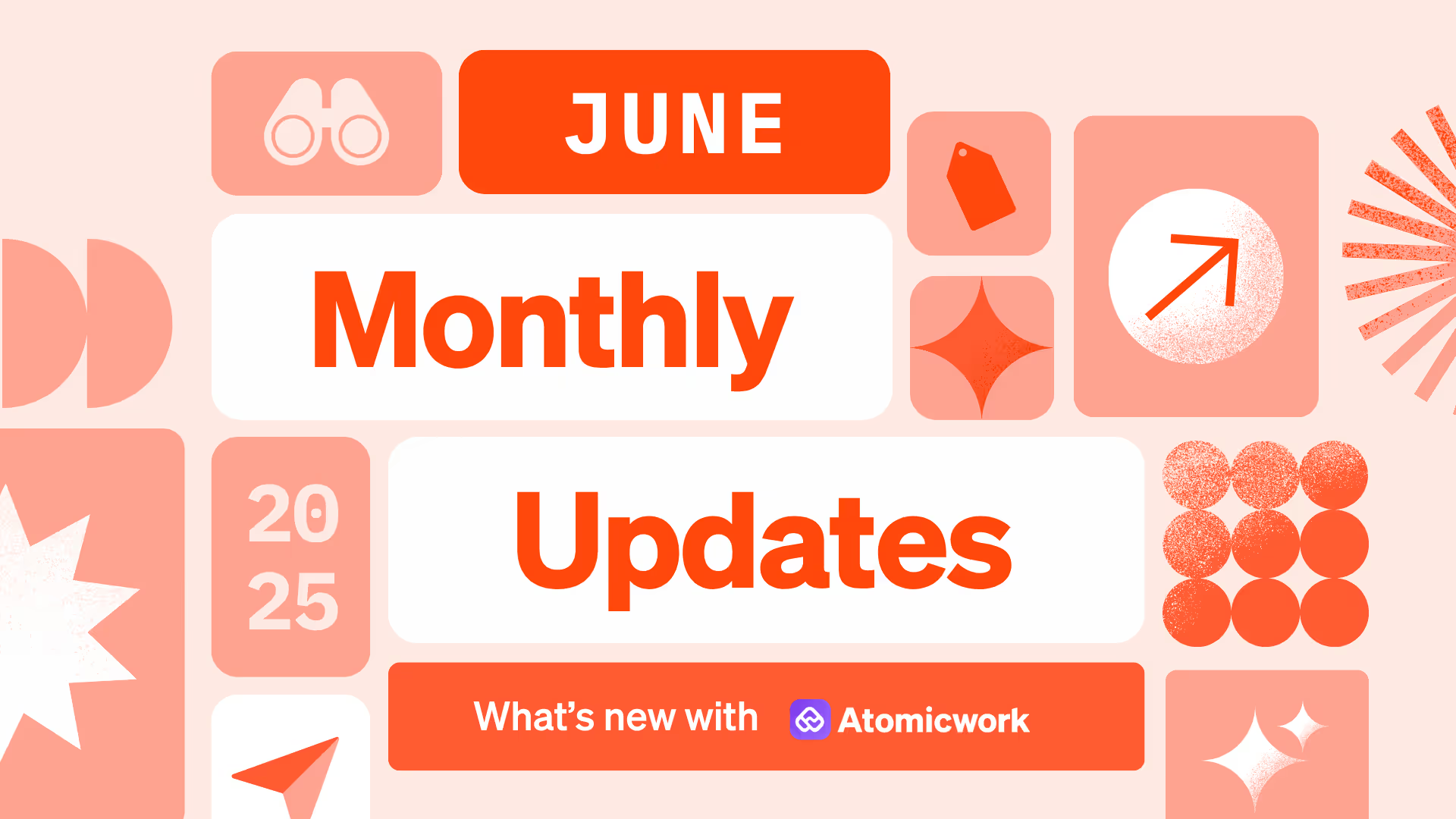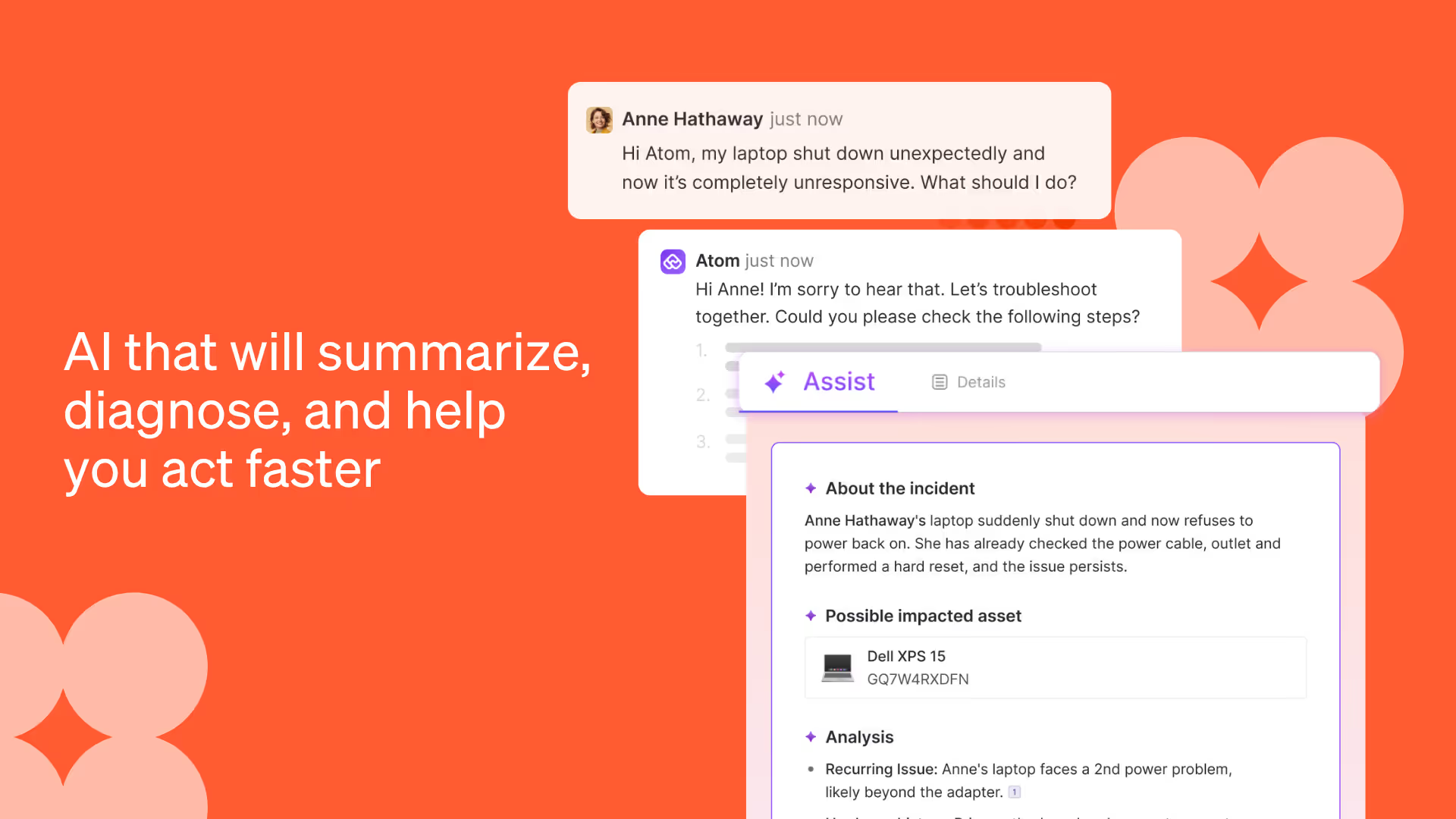

















As teams grow and requests pile up, it’s the small things — the clicks, the searches, the manual steps — that start to add up. That’s why our focus this month has been on making things noticeably smoother for the people doing the work: the agents resolving tickets, the admins building workflows, and the teams tracking performance.
June’s updates are designed to remove friction. Whether it’s AI that helps you resolve faster, dropdowns that clean up after themselves, or workflows that respond intelligently to structured data — everything we shipped is about making Atomicwork easier to use, more responsive, and better at staying out of your way.
Let's dive into what’s new!
What if every agent had a smart assistant working alongside them - summarizing tickets, spotting patterns, and suggesting next steps? That’s exactly what Agent Assist does.
It lives inside every request, helping agents move faster by:
For example, your team receives a request about a laptop that keeps restarting. Agent Assist instantly summarizes the issue, pulls in the requester’s asset details (model, age, past issues), and highlights a similar ticket from last month that was resolved by updating the device’s firmware. It also recommends next steps, like checking for that same update, based on what worked in the past.
Instead of piecing together context from different tabs, you get a quick summary, helpful history, and a proven fix, all in one view.

The new Atomicwork extension for Azure DevOps (now live on the Visual Studio Marketplace) lets you automate change governance right inside your CI/CD pipelines.
Here’s what it does:
This brings your change governance directly into the developer workflow without jumping between tools or chasing approvals manually.
Workflows can now understand and act on deeply nested JSON responses, including arrays and multi-level objects, without needing external middleware or manual restructuring.
You can reference fields from complex API responses directly in trigger conditions, workflow actions, and update notifications.
Let’s say you want to analyze all the internal notes related to a request. You can now configure a workflow to loop through the array of comments, use AI to summarize the conversation, detect repetitive back-and-forth, and if a loop is found automatically escalate the ticket with full context to the right team.
With full visibility into external data structures, you can now build automation that’s not just reactive but deeply context aware.
ON%20point.avif)
Dropdowns are a key way to collect structured information such as hierarchical inputs. They’re now more powerful and easier to manage, especially nested dropdowns used in complex workflows.
Here’s what we improved:
Building complex forms and workflows just got cleaner, safer, and far less error prone.
Managing large volumes of requests is easier when you can slice and sort them your way. That’s where our new request tags come in.
Tags are color-coded and fully customizable, can be added manually or via workflows, and can be used to filter requests for faster triaging.
You can tag requests as “Outage”, “Vendor-related”, or “Policy Update” and immediately narrow your view to just what matters. And with agents able to add or remove tags, you get flexibility without chaos.

Sometimes the best productivity boost is shaving seconds off everyday tasks.
Starting with our full-page search view. Now when you hit Cmd + K or Ctrl + K, you can:
And to reduce confusion over who acted on a request, user profile popovers now appear when you hover over names in requests or activity logs showing their department, email, and a link to their full profile.

When requests are tied to multiple assets — laptops, monitors, mobile devices — clarity matters.
We redesigned asset display inside requests to give you just that:
You can now track service desk performance in detail across both individuals and teams.
The Agent and Group Performance reports help you go beyond surface-level stats to spot trends, flag bottlenecks, and recognize top performers. With these reports, you can:
These insights will help you continuously fine-tune how your team operates whether it’s shifting resources, adjusting staffing, or simply recognizing a job well done.

Other enhancements you don’t want to miss
And that’s a wrap for June! Atomicwork is designed to help your teams work smarter and move faster — whether you’re resolving requests or scaling operations across the org.
Want to see it all in action? Sign up for a demo and we’ll walk you through what’s new, what’s possible, and how it can work for your team.




